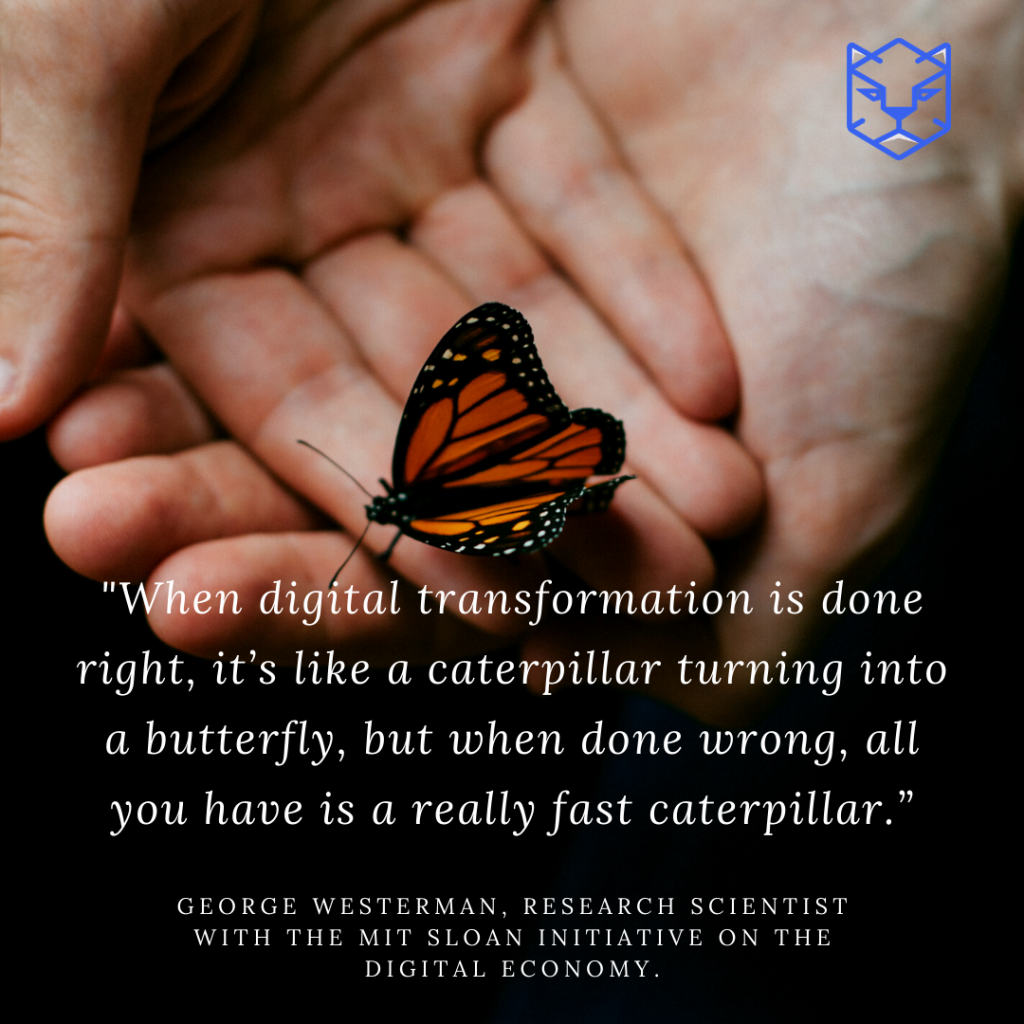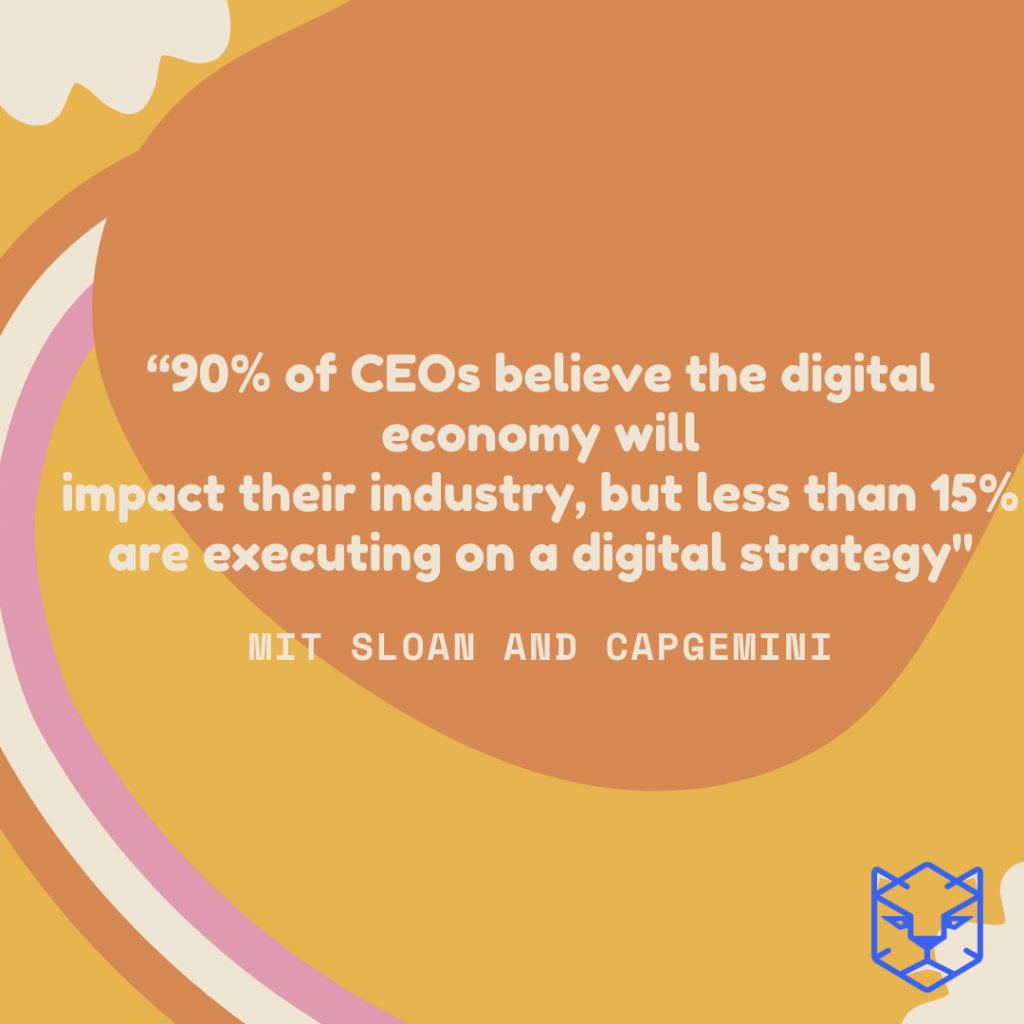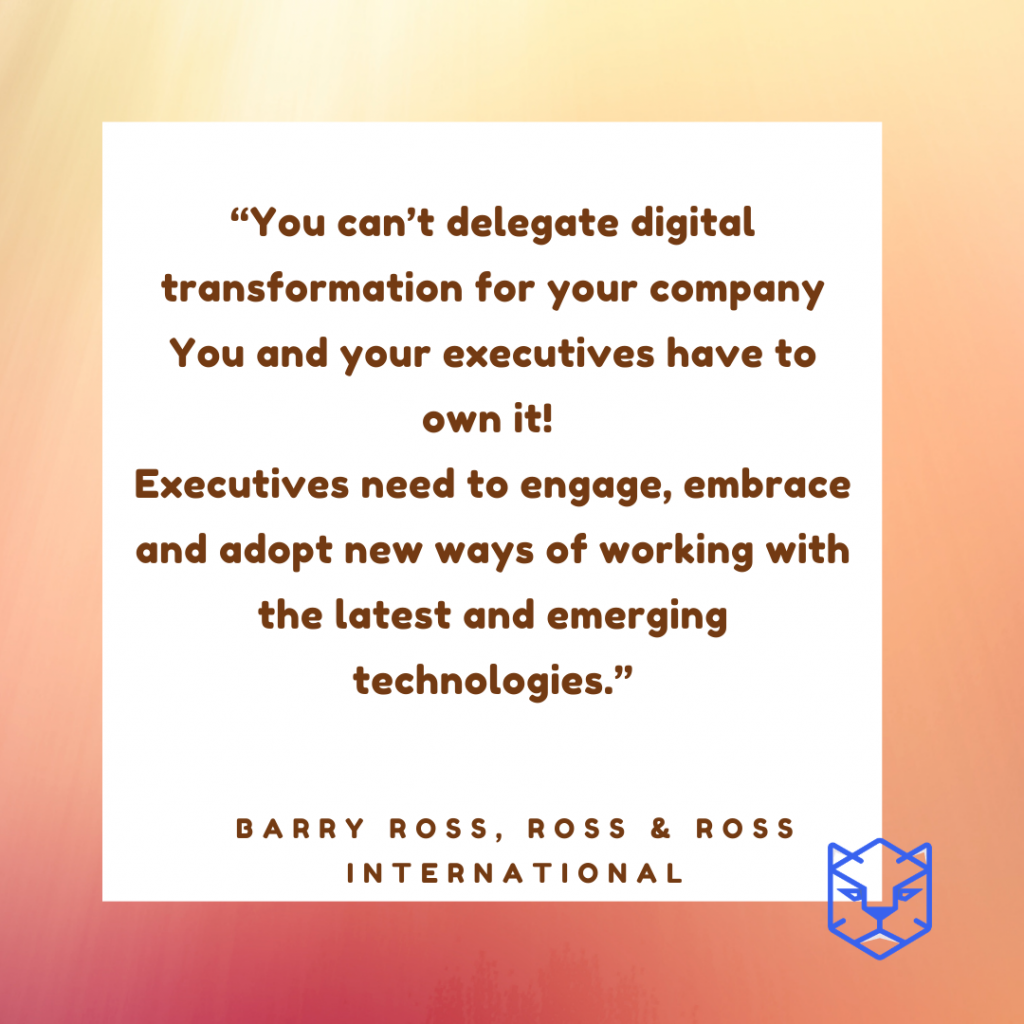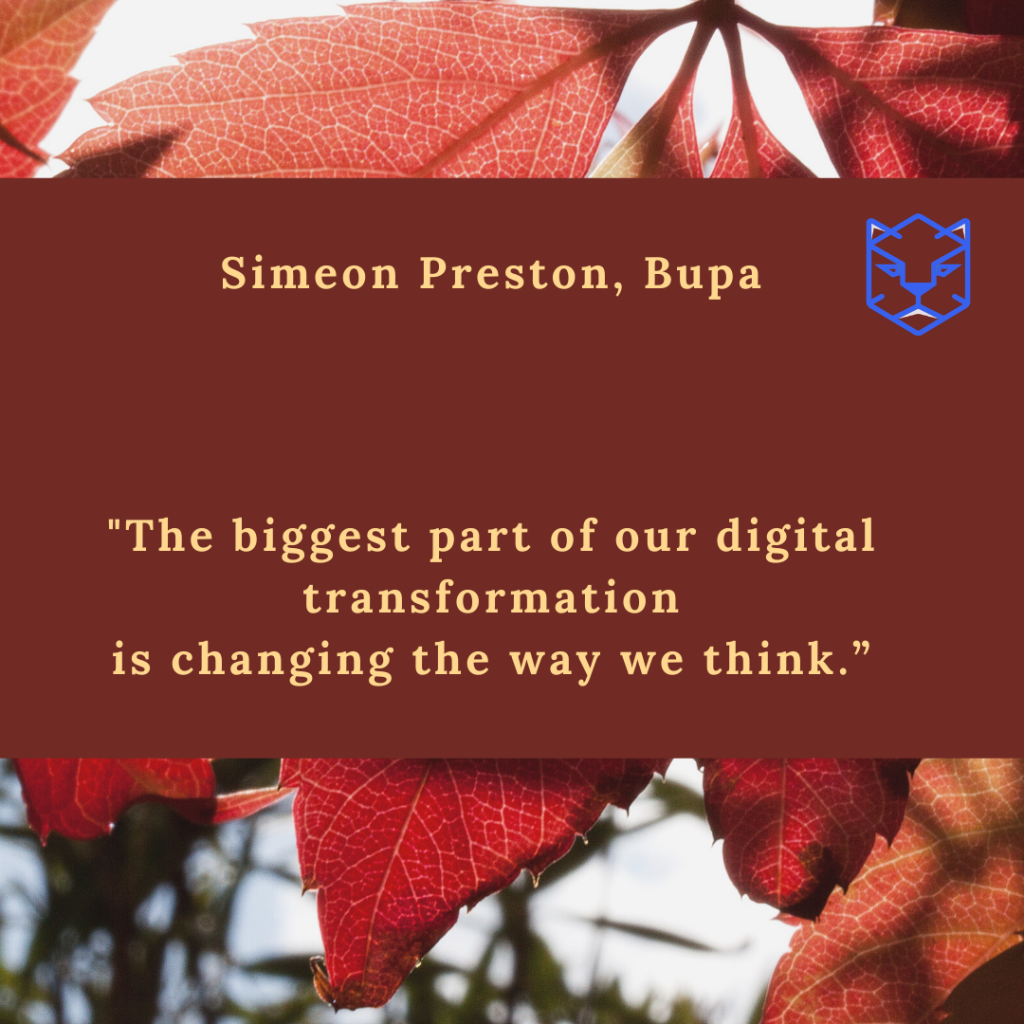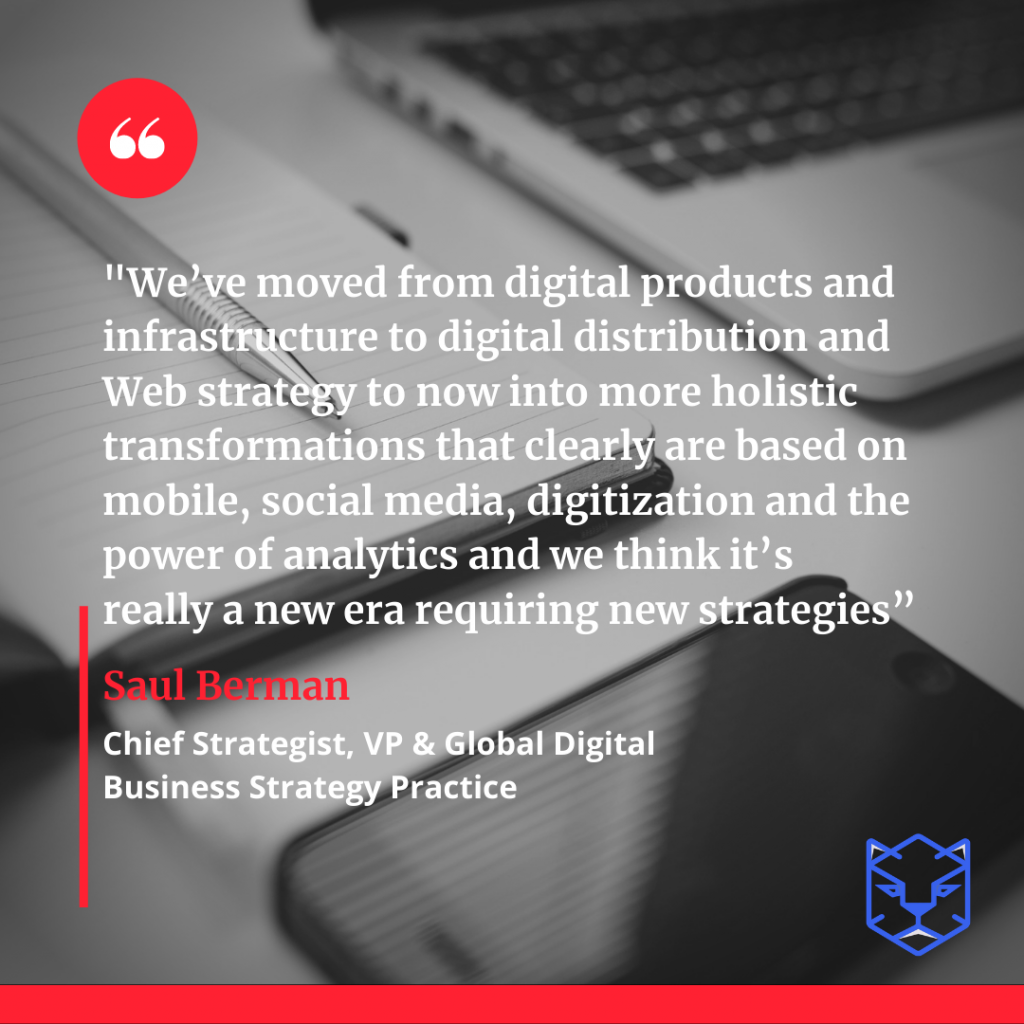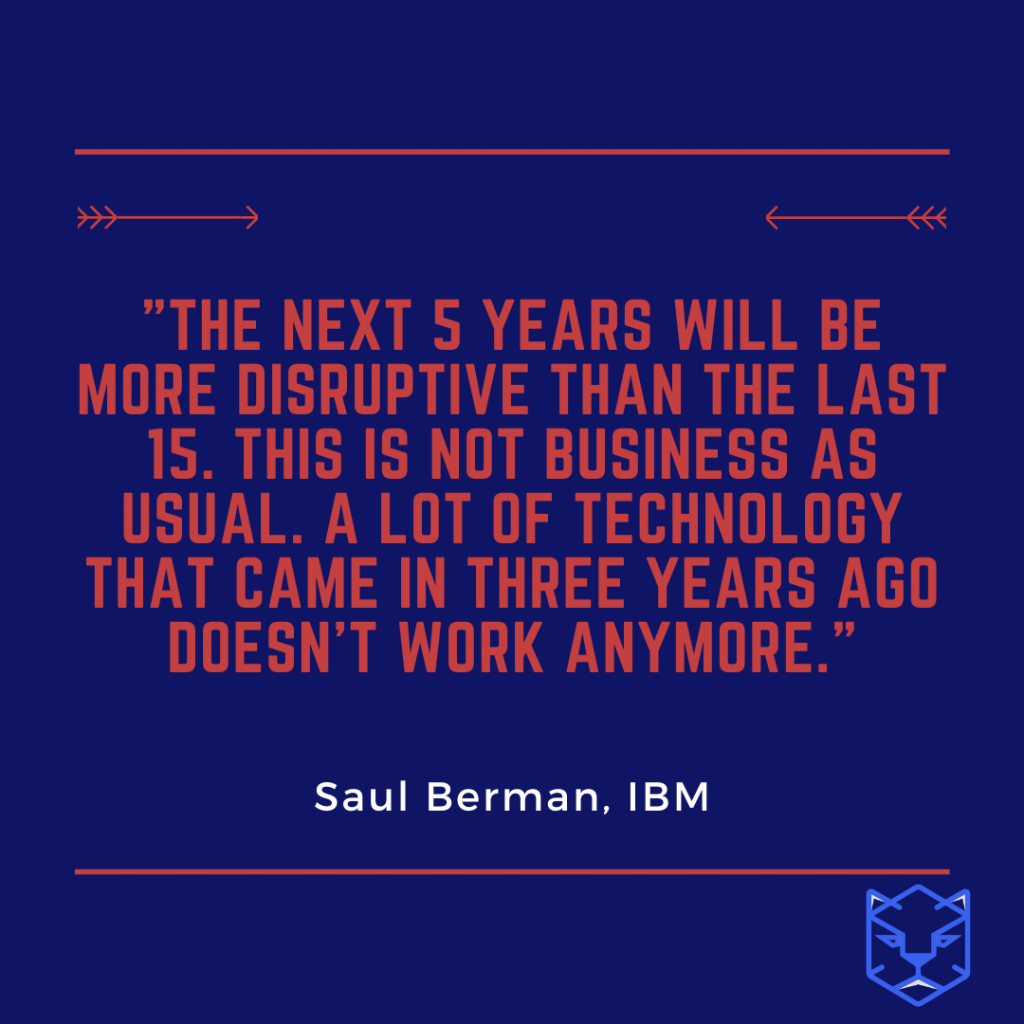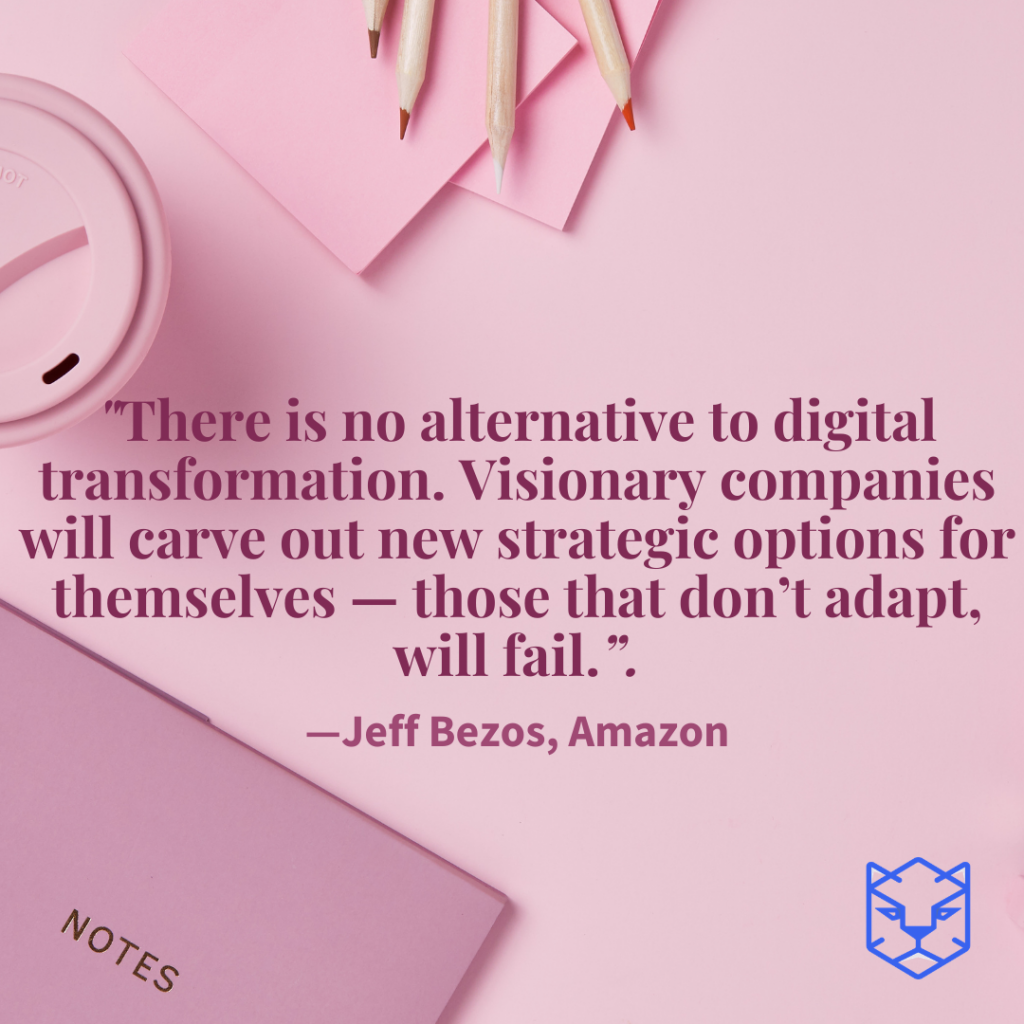While digital investment is almost unquestionably the right course of action for most companies, organizations struggle to create the desired results. Estimates of digital transformation failures range from 66% to 84%.
Such a high failure rate is not surprising, as leaders are trying to create entirely new competencies and force them into an organization with solid cultures and existing operating models. While most executives are change management professionals, digital transformation is more profound than the usual system or process update.
Of course, digital technology can improve or augment existing ways of operating.
So, as you go through your digital transformation, we recommend starting with a few questions that go deeper than “what talent do you need” or “how much money will you spend” and delve into broader organizational readiness.
Is it a digital upgrade or a digital transformation?
Digital transformation for most companies ends with digital upgrades, where digital technology is used to enhance the efficiency or effectiveness of something that your company is already doing.
For example, increasing your marketing spend for digital channels or upgrading your internal communication systems. On the other hand, a digital transformation occurs when you use digital technology to change how you do business, especially around customer interactions and value creation.
If you find that you are embarking on an upgrade rather than a transformation, ask yourself whether this will be enough to stay competitive.
Do you and your team agree?
Digital technology and business models are on every executive’s radar, and there is an expectation that most companies need to change to stay current. However, one situation we’ve seen repeatedly is a leadership team trying to lead a digital transformation that they’re not particularly enthusiastic about.
We all have core beliefs about what creates value in the world, and they shape the way we allocate our time, attention and capital. Most leaders have decades of experience focusing on factories, real estate, inventory and human capital. Abandoning these habitual priorities requires self-reflection, openness, and a concerted effort to develop new patterns in thought and action.
Are you ready to share value creation with your customers?
The latest technology-enabled business model, network orchestration, is based on the fact that companies can allow customers and other networks to share the value creation process. Uber depends on a network of drivers; Airbnb relies on a network of homeowners; eBay depends on sellers. These networks are essential for organizations and, by accessing external assets, these companies can achieve exceptional profitability.
Sharing the workload seems like a winning proposition, but many leaders are hesitant to relinquish control and rely on a network outside their chain of command. Working with these outside groups requires new and co-creative leadership styles, allowing organizations to tap into vast sets of underutilized capabilities and resources.
Have you protected your digital team?
A digital upgrade requires a well-defined team with a limited scope. A digital transformation requires a team with a cross-functional mandate and solid support.
This becomes an essential point because organizations often do not change their internal structure as part of the digital transformation. So the teams working on these transformations fit into the existing system.
Where the team actually “is,” both physically and on the organizational chart, can affect its ability to influence member cross-functional groups for true digital transformation.
We’ve seen many companies limit digital’s progress by basing their team on marketing or IT.
Do you know how to measure the value you intend to create?
You manage what you measure. Most organizations focus on physical capital (to make and sell products) or human capital (to provide services).
These companies monitor inventory, productivity, utilization, and other traditional key performance indicators (Key Performance Indicators, KPIs).
Digital transformations don’t always affect the KPIs a company is already measuring. The ultimate goal of a transformation is to affect revenue, profitability, and investor value. Along the way, however, it is helpful to track intermediate indicators.
For many digital networking companies, this includes feeling and engagement and value sharing and co-creating networks. For example, in judging the success of the Developer Network, Apple can measure the number of developers who build apps for its app store, the amount of money generated by those apps that Apple shares with its community, and customer satisfaction with the apps.
Are you ready to judge your team?
There’s an old saying: “It’s easier to change people than it is to change people.” In other words, sometimes, a new vision requires new people to create it.
For many, the digital people you need on your team and board do not reside in your organization at all or at least not in the right amount. Many of your current employees will be dedicated to doing what they have always done and created resistance and obstacles to change.
To make room for your digital transformers, make judgments at the outset regarding your team and board. In our experience, nearly half of your staff and board will have to be replaced in the course of a successful digital
transformation. While painful, it’s a good thing for the organization: creating a balance between the old and the new.
Will you be ready to derive your digital business?
Sometimes, the new company within the organization becomes more extensive and more valuable than the parent company that gave rise to it – it either runs the risk of not attracting the right talent or faces disputes between digital and existing.
(A great resource on this is The Second Curve by Ian Morrison.) Often, separation is required to enable both the parent and child to continue growth.
Google specializes in creating new ventures and enabling them to grow; see its recent reorganization on Alphabet to allow each of its core businesses to pursue their potential (including Google and YouTube). In other organizations, the new digital company will absorb and improve its parent.
Transforming an organization is complex, and research proves it. But even so, it’s worth it.
Final thoughts
As a leader, you probably already know the basics of change management, but a digital transformation goes deeper and thus places different demands on you, your team, and your organization. On the other hand, however, you have the opportunity to invest in the most profitable and valuable business models the market has ever seen.


